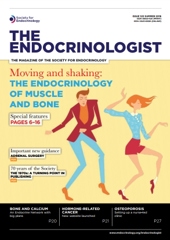The old adage ‘publish or perish’ still persists, but how easy is it to get into print these days? Despite the increased number of journals, especially open access publications that boast of rapid review and publication times, it seems to be increasingly difficult and lengthy, particularly in the case of high impact journals to which we all aspire.
The problem is that career progress, promotions, grants and REF (Research Excellence Framework) grading depend on track records which use (amongst other things) bibliometrics. Both numbers of publications and impact factors of journals are scrutinised.
When I began publishing in the mid-1970s, none of my papers were rejected, and referees usually came back with ‘minor revisions’ required. There was no question of paying for publication. But things have changed, particularly in the last decade.
JOURNAL SHOPPING
I know I am not the only one who has done ‘journal shopping’, starting off with submission of one’s paper to an appropriate journal with the highest impact factor. Rejection may be without review. Then one tries the next one down the line, and on it may go.
Perhaps on the third or fourth attempt (by now the impact factor has dropped considerably and authors are becoming demoralised!) there seems to be a bite on the hook. The submission is neither accepted nor rejected but, based on the reviewers’ comments, major revisions are required by the Editor before resubmission. This can mean more months of further experiments and a rewrite, though often with exactly the same conclusions as one’s original submission. However, even having addressed all the reviewers’ questions, a paper can still be rejected. So a year or so can elapse since the original submission.
A CLOSER LOOK AT REVIEW TIMES
Apart from these potential delays, other factors may explain the lengthening process of publication. A fascinating news feature by Powell in Nature quotes the results of different analyses.1
High and very low impact journals have the longest time from submission to review (around 130 to >150 days). For example, over the past decade the median time for Nature has increased from 85 days to around 150 days, and that for PLOS ONE from 37 to 125 days. One analysis showed that times for the whole PLOS family of journals have roughly doubled from 50–130 days to 150–250 days!
DATA PER PAPER
More interesting is that the amount of data per paper has increased considerably. Powell’s analysis was based on the number of panels of experimental figures in three high impact journals: Cell, Nature and Journal of Cell Biology. In 1984, the number of panels was 10–18 but by 2014 it was 20–40. These increased figures were also correlated with an increase in the number of authors on each paper.
Does this reflect the increased demand for experimental data or the need to get doctoral and post-doctoral students to increase their publications to help with their careers? Many a time I have had intercalated students ask if their project work would be published because it would help with their placements. So pressure is there at all levels.
When I started my career, there were usually only two or three authors to each paper. The main researcher’s name came first with the name of the funder or supervisor second or last. Any middle authors were considered a relatively insignificant piece of the jigsaw puzzle. We all knew our place! Well, except in Journal of Physiology that insisted authors were listed alphabetically. I suppose that took the hierarchy out of the system but I still remember my first publication when I put my name last – I had made it as a supervisor of research!
THE MARCH OF TECHNOLOGY
'I suspect the increasing number of sbmissions results from journal shopping and contributes to the lengthening time of the review process'
What about digital printing? Well, the good news is that time from acceptance to publication has halved since the early 2000s to a median time of 25 days, and many journals now put preprints online after acceptance. This contrasts to the lengthening time of the review process, which I suspect is partly due to the increasing number of submissions resulting from ‘journal shopping’. According to Veronique Kiermer, executive editor of PLOS ONE, the volume of submissions has risen from 200 in 2006 to 30,000 a year today. In 2015 the journal used 76,000 reviewers.
JOURNALS CLOSE TO HOME
So, how do the Society’s journals fare? According to Simon Laurenson, Operations Manager for Bioscientifica, the submissions for Journal of Endocrinology, Journal of Molecular Endocrinology and Endocrine-Related Cancer were 1,500 in 2015, review times around 100 days, acceptance rates about 20% and publication was around 40 days after acceptance. For the open access publication Endocrine Connections, submissions were lower and acceptance rates higher (33%).
The competition for publication in the highest impact factor journals is now fierce, as it is for research grants. This all takes time away from research, which is the basis of funding and publications. Perhaps this is one reason why researchers go for the open access journals where the quality of science may be lower but acceptance rate higher and publication times quicker – though this option is more costly.
We all love our name in print and I still remember my first publication (no online publishing then, but 50 free offprints sent in the post!). There I was – over 40 years ago – in a scientific journal: name first, supervisor second. As they say, ‘times they are a-changing’.
Saffron Whitehead
Emeritus Professor, St George’s University of London
REFERENCE
- Powell K 2016 Nature 530 148–151.





